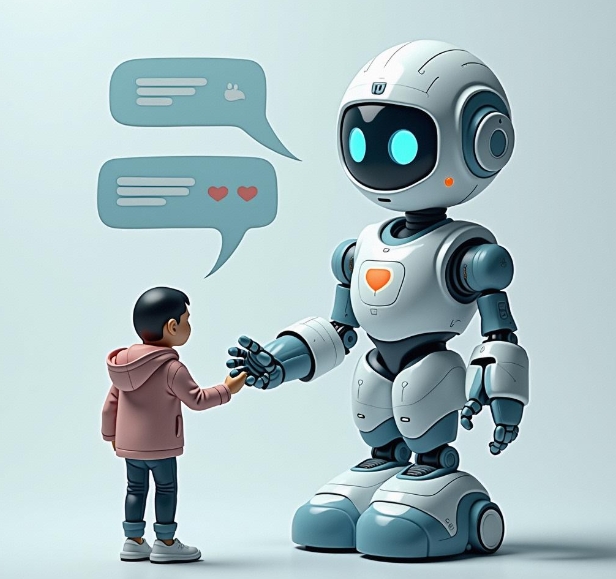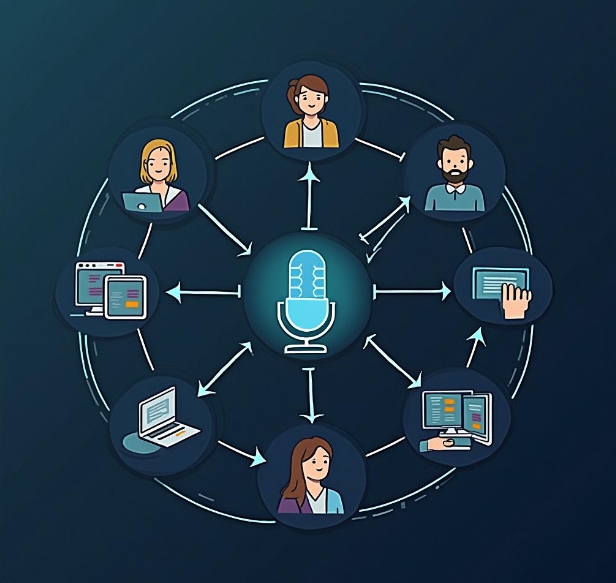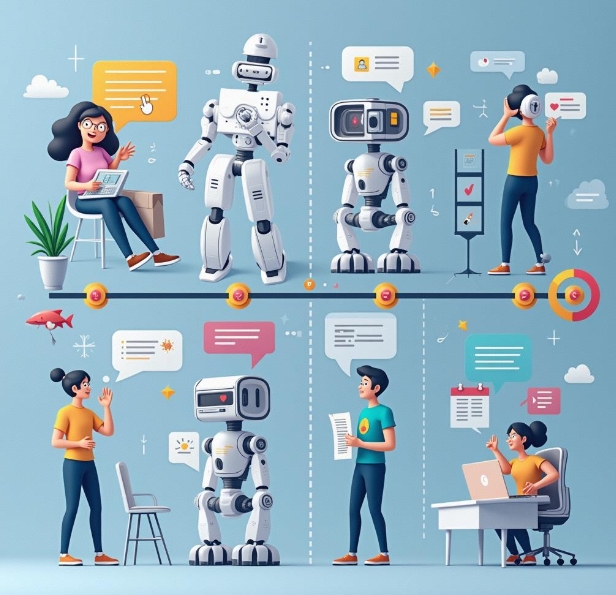Development and Deployment of Chatbots: The Technological Frontier of Intelligent Interaction
- latest articles
- 1.DApp Development & Customization: Merging Diverse Market Needs with User Experience 2.Analysis of the Core Technical System in DApp Project Development 3.How to achieve cross-chain interoperability in Web3 projects? 4.How does the tokenization of points reconstruct the e-commerce ecosystem? 5.How to Set and Track Data Metrics for a Points Mall? 6.What is DApp Development? Core Concepts and Technical Analysis 7.Inventory of commonly used Web3 development tools and usage tips 8.Development of a Distribution System Integrated with Social E-commerce 9.Six Key Steps for Businesses to Build a Points Mall System 10.What is DApp Development? A Comprehensive Guide from Concept to Implementation
- Popular Articles
- 1.Future Trends and Technology Predictions for APP Development in 2025 2.Analysis of the DeFi Ecosystem: How Developers Can Participate in Decentralized Finance Innovation 3.From Zero to One: How PI Mall Revolutionizes the Traditional E-commerce Model 4.DAPP Development | Best Practices for Professional Customization and Rapid Launch 5.Recommended by the Web3 developer community: the most noteworthy forums and resources 6.From Cloud Computing to Computing Power Leasing: Building a Flexible and Scalable Computing Resource Platform 7.How to Develop a Successful Douyin Mini Program: Technical Architecture and Best Practices 8.Shared Bike System APP: The Convenient Choice in the Era of Smart Travel 9.How to Create a Successful Dating App: From Needs Analysis to User Experience Design 10.From Design to Development: The Complete Process of Bringing an APP Idea to Life
With the rapid advancement of artificial intelligence technology, chatbots have evolved from laboratory research to practical applications, becoming a crucial medium for intelligent interaction. They are widely used in fields such as customer service, education, healthcare, and entertainment, transforming traditional human-computer interaction models. This article delves into the key technologies, implementation steps, and future trends in chatbot development and deployment, helping readers stay informed about the latest developments and challenges in this field.
Part 1: Basic Principles and Functional Architecture of Chatbots
1.1 Definition and Types of Chatbots
A chatbot is a software system based on Natural Language Processing (NLP) technology that interacts with users by understanding and generating human language. It is primarily categorized into rule-driven and AI-based intelligent types.
Rule-driven: Relies on predefined rules and keyword matching, suitable for simple tasks such as answering frequently asked questions.
Intelligent: Based on machine learning and deep learning technologies, capable of autonomous learning and optimization, with stronger language understanding and contextual processing capabilities.
1.2 Core Functional Architecture
The functional architecture of a chatbot typically includes the following modules:
1. Natural Language Understanding (NLU): Responsible for semantic parsing, converting user input into structured data.
2. Dialogue Management (DM): Determines the response logic of the chatbot and designs the user interaction flow.
3. Natural Language Generation (NLG): Converts the internal logic of the chatbot into natural language output.
4. External Integration Interface: Supports connections with external systems (such as databases and APIs) to perform queries or execute commands.

Part 2: Key Technologies in Chatbot Development
2.1 Natural Language Processing Technology
Natural Language Processing is the core technology enabling intelligent interaction in chatbots. It primarily includes the following key components:
1. Tokenization and Part-of-Speech Tagging: Breaks down user input into basic units and labels their parts of speech.
2. Entity Recognition: Extracts important information from the text, such as names, times, and locations.
3. Sentiment Analysis: Analyzes the user's tone to determine their emotional state.
Modern chatbots also utilize large-scale pre-trained language models (such as the GPT series), achieving new heights in semantic understanding and generation.
2.2 Dialogue Management and Context Modeling
An excellent dialogue management system can dynamically adjust the conversation flow based on user input and historical context. Traditional dialogue management relies on rule engines, while modern approaches use reinforcement learning and neural network technologies to build context-sensitive interaction models.
2.3 Multimodal Interaction
To enhance user experience, many chatbots not only support text but also understand voice, images, and even gestures, enabling multimodal interaction. For example, voice assistants, which combine speech recognition and generation technologies, are widely used in the smart home sector.

Part 3: Development and Deployment Process of Chatbots
3.1 Requirement Analysis and Goal Definition
Before developing a chatbot, it is essential to define the application scenario and target user group. For instance, enterprise customer service chatbots need to focus on customer needs, while those in the education sector should design personalized teaching plans.
3.2 Data Preparation and Model Training
Data is the foundation of chatbot development, typically requiring the collection of large amounts of user dialogue samples for cleaning and annotation. When training the model, it is necessary to select appropriate algorithmic frameworks and adjust parameters to improve performance.
3.3 User Experience Design
Chatbots require not only robust technical support but also attention to user experience. Designing intuitive interaction interfaces, clear dialogue logic, and a warm language style can significantly enhance user satisfaction.
3.4 Testing and Optimization
After development, testing is required to evaluate the chatbot's accuracy, response speed, and user satisfaction. During optimization, user feedback should be analyzed to continuously improve dialogue logic and functionality.
3.5 Deployment and Maintenance
After deployment, attention must be paid to system stability and security. Regular updates to algorithms and data ensure the chatbot remains efficient and intelligent.

Part 4: Typical Use Cases of Chatbots in Practical Applications
4.1 Customer Service Sector
Intelligent customer service is one of the earliest and most widely adopted applications of chatbots. It efficiently handles user inquiries and reduces labor costs.
Case: An e-commerce platform deployed an intelligent customer service chatbot, reducing customer service response time by over 50%.
4.2 Healthcare Sector
Medical chatbots assist patients with symptom consultation, appointment scheduling, and other services, improving the efficiency of medical resource utilization.
Case: A hospital developed a symptom analysis chatbot that helps patients screen for common diseases, significantly enhancing the hospital's diagnostic efficiency.
4.3 Education Sector
Educational chatbots improve students' learning experiences through personalized learning suggestions and interactive content.
Case: An online education platform's intelligent chatbot adjusts course content based on students' learning progress, making it highly popular among students.
Part 5: Future Trends and Challenges
5.1 Technological Trends
More Powerful Pre-trained Models: Next-generation language models will further enhance chatbots' semantic understanding and generation capabilities.
Emotion and Context Awareness: Future chatbots will more naturally understand user emotions and provide thoughtful responses.
Edge Computing and Privacy Protection: Leveraging edge computing, chatbots can operate locally, enhancing data privacy protection capabilities.
5.2 Challenges
Data Bias: Models may develop biases due to uneven data distribution, requiring careful attention during data collection and annotation.
Multilingual Support: Developing chatbots that support multiple languages requires overcoming cultural differences and technical challenges.
User Privacy Issues: Ensuring user data is not misused during collection and processing is a critical concern for developers.
Conclusion
As a technological frontier in intelligent interaction, chatbots are having a profound impact across various industries. From simple dialogue functions to multimodal interaction experiences, their technology and applications are maturing. However, alongside technological advancements, challenges such as privacy protection and multilingual support urgently need to be addressed. In the future, with continuous technological progress and further innovations, chatbots will serve as a bridge between humans and the intelligent world, bringing more convenience and possibilities to our lives.
-

How does artificial intelligence technology transform the operational models of modern enterprises?
In the wave of the digital era, artificial intelligence (AI) technology has tran···
-

How to Utilize Artificial Intelligence for Precision Medicine and Health Management
With the rapid advancement of technology, artificial intelligence (AI) has demon···
-

Integration and Application of Artificial Intelligence and Robotics
In today's era of rapid technological advancement, the integration of artificial···

 Blockchain
Blockchain










